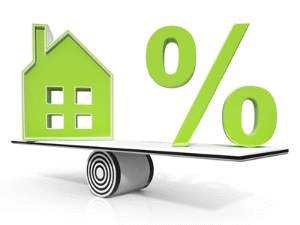Housing sales drop, prices race ahead
Mixed signals are apparent in the latest data on the strength of the housing market.
Tuesday, June 15th 2021, 2:06PM

Sales fell for the third straight month but prices continued to rise, although at a slower pace.
The REINZ House Price Index rose 1.8% in seasonally adjusted terms, following a 1.9% rise in April.
While it is still a strong rate of increase, says Westpac acting chief economist Michael Gordon, it is a slowdown. In the six months to March, prices rose at an average pace of 2.8% a month.
REINZ says the median prices for residential property across New Zealand increased by 32.3% from $620,000 in May 2020 to $820,000 in May 2021.
Although it wasn’t a new record, it was the highest annual percentage increase in house prices since records began; and five out of 16 regions reached record median prices as did 18 districts.
The median house price for New Zealand excluding Auckland increased by 28% from $530,000 in May last year to $678,500 in May 2021.
Auckland’s median house price increased by 26.9% from $905,000 in May 2020 to $1.48 million in May 2021 – another new record for Auckland.
Additionally, Papakura District and Waitākere City reached new record median prices of $900,000 and $1.05 million respectively.
In addition to Auckland, three other regions reached record median prices and one region was a record equal. They were:
• Taranaki: with a 29.1% increase from $426,000 in May 2020 to $550,000 in May 2021. Additionally, South Taranaki District saw a new record median of $405,000
• Tasman: with a 21.2% increase from $701,500 in May 2020 to $850,000 in May 2021
• Canterbury: with a 26.5% increase from $460,000 in May 2020 to $582,000 in May 2021. Additionally, Mackenzie District ($705,000), Selwyn District ($677,500) and Waimate District ($385,000) all saw record median highs
• Waikato: with a 21.7% increase from $600,000 in May 2020 to a record equal $730,000 in May 2021. Additionally, Ōtorohanga District ($535,000), Taupō District ($710,000), Waikato District ($726,000) and Waitomo District ($360,000) all reached record median highs.
REINZ acting chief executive Wendy Alexander says while there haven’t been as many record median prices in May as in the past few months, there is no denying the country’s residential property market is still holding strong.
“Median prices haven’t significantly eased yet as many had hoped would be the case, and things are certainly not getting any more affordable for first time buyers.
“Looking at the overall picture, the lack of total housing supply is continuing to push up house prices.
“In May, there were fewer than 15,000 properties available for sale across the entire country,” says Alexander.
This is the second lowest level of total inventory since REINZ began collecting records. And properties are still selling relatively quickly for this time of year which is when the market starts to slow down a bit.
“While some of the regions are starting to show signs of prices easing, it’s hard to know whether this is a direct result of the bright-line test extension and scrapping of investors’ ability to claim mortgage interest payments against rental income or just the usual winter slow down.
“This is particularly true given the Auckland market is still forging ahead, with another record median price.”
Meanwhile Gordon says while Westpac has been forecasting house prices would flatten off over the rest of this year, as a result of the changes to the tax treatment of property investors the recent housing data casts some doubt on whether a clampdown on investors is enough to achieve this result.
“The limited data we have so far on mortgage lending suggests home buyers have been quite willing to step in and pay these kinds of prices.”
Gordon says Westpac economists believe the real test of the housing market will come when mortgage rates start to rise.
While longer-term three to five year mortgage rates have risen in recent months, the shorter-term, up to two year rates, that are the most popular among borrowers have actually fallen even further.
These rates are strongly influenced by expectations of the OCR, and will likely rise ahead of any actual OCR hikes.
| « Treasury’s house price claims debunked | House prices ramping up nationwide » |
Special Offers
Comments from our readers
No comments yet
Sign In to add your comment
| Printable version | Email to a friend |


